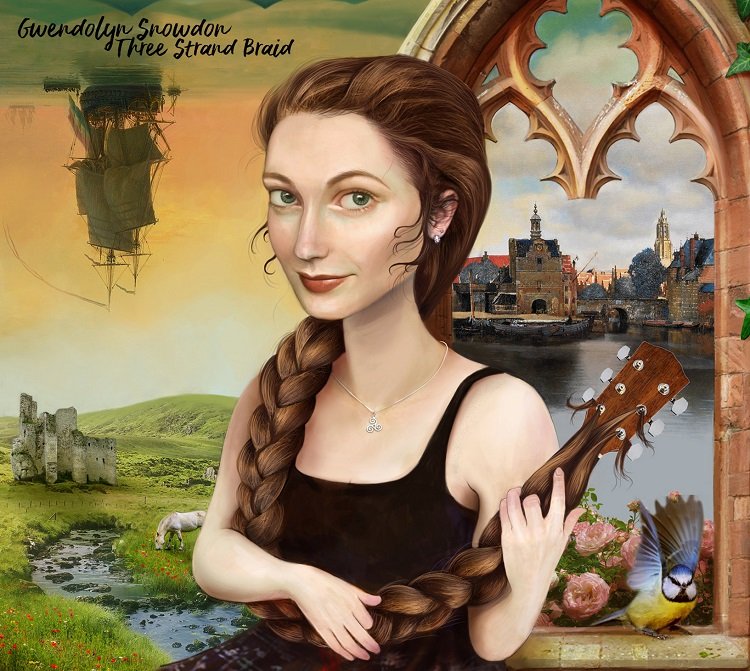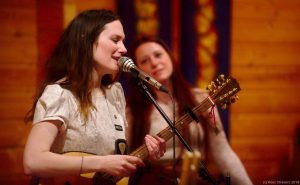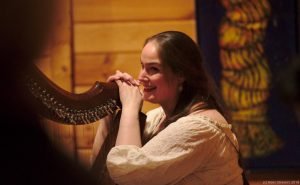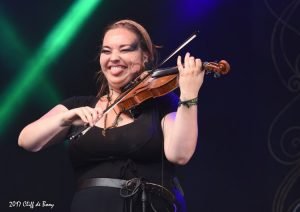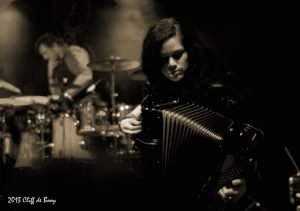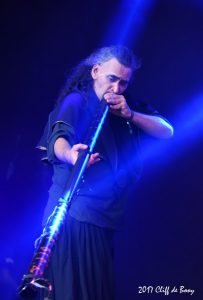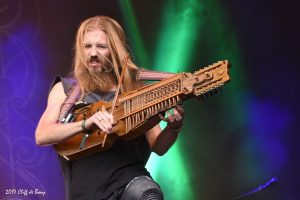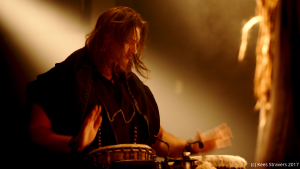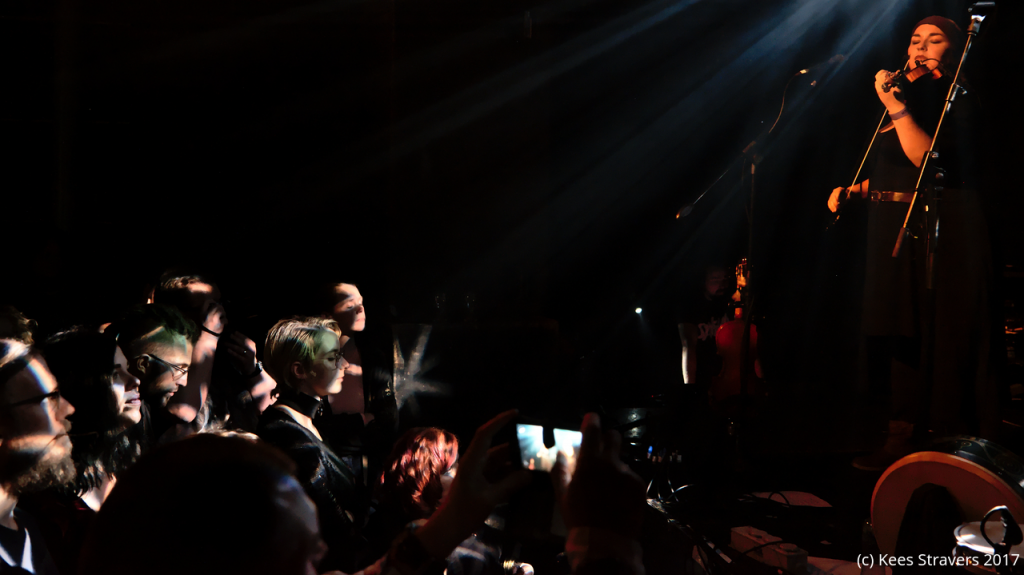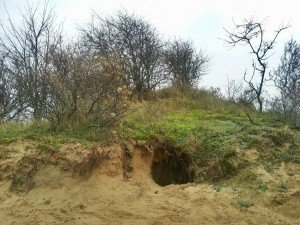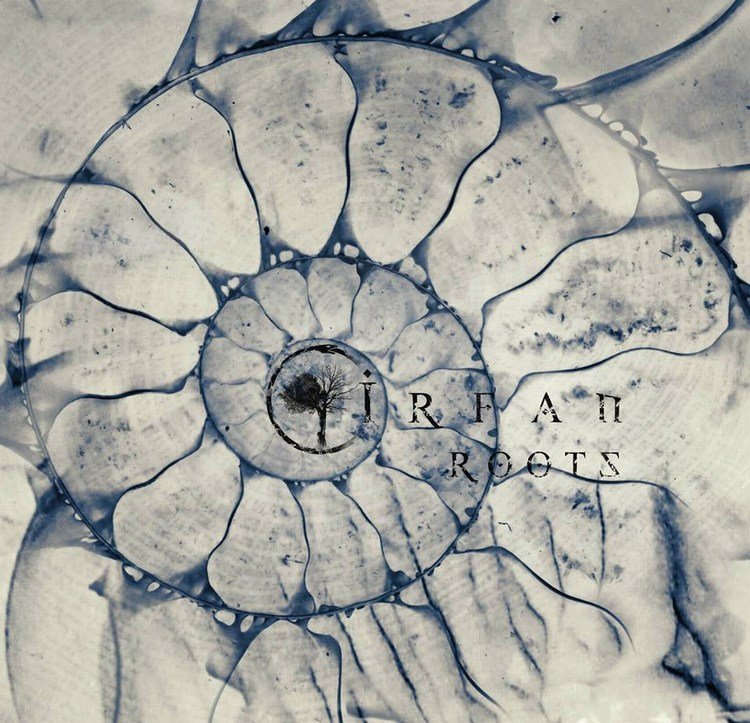
Sunday the 25th of November, 14:45 PM, I am on Winter Castlefest, the 2018 edition. As I was getting ready to photograph the next band in ‘The Great Hall’-the name Castlefest has given to the big tent where the games are played and the indoor performances take place- I couldn’t help but notice Sowulo‘s Faber Auroch entering. The next to pass me was Sara (SeeD‘s singer/bouzouki player) and her partner. But I really started raising an eyebrow when some minutes later Brisinga‘s Fabi came by asking if I knew where the Imbue members were sitting. As I started looking around, I was also able to spot Rowan from Heidevolk and members from Sunfire and The Royal Spuds in the audience. All the members of Emian and Waldkauz had found a place in the front rows, as had former AmmA member Hanna van Gorcum and from the corner of my eye I could also see sound magician Fieke van den Hurk. Afterwards I discovered SeeD’s frontman Koen van Egmond and Sowulo’s harp player Chloé Bakker also attended the concert a day earlier. Now the Castlefest scene, as I fondly call the Pagan/fantasy folk scene we are all part of, has always been a really supportive one with bands visiting each other’s concerts and all kinds of collaborations happening on stage and behind the scenes. But even in this supportive scene it is rare for ten(!) bands to be represented at one concert. And that’s exactly what happened as Irfan got ready to play at the Castlefest 2018 Winter Edition. In a way it says all about the status Irfan has within the alternative Pagan folk scene.
Well, the concert was beautiful, mesmerising and captivating from start to finish. With the seating area placed closely around the podium, there was this real connection between the band and the audience. The atmosphere was pure magic, really captivating and Irfan were given a standing ovation at the end of the concert. It goes without saying that I acquired their newest mini-CD Roots straight after to try and hopefully re-experience a bit of that magic again at home. And that is exactly what happened when I put Roots in my CD player.
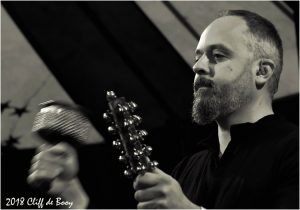 From the first notes of the opening song Mominstvo Irfan captivates you. They take you into ancient Persian times. You walk with them into the courts of India, you reminisce about the old days of the pharaohs. And it feels like the sharp desert sand brushes over your face while you marvel at the wonders of Petra. In their bio Irfan compare their music with audio-archaeology and I can clearly hear why they say that. Irfan has acquired the ability to fill their music with history. They manage to sound old and modern at the same time. Giving their music a timeless quality that is rare. They did it for the first time on their second album Seraphim. Mostly Seraphim is a mix between classical European music and Eastern European folk, -imagine
Cesair
meeting up with
Loreena McKennitt,
with
Dead Can Dance
or
Ofra Haza
joining in every now and again to spice things up-, but the song Return to Outremer, had that magical timeless feel to it for the first time. The band perfected this sound on their 2015 album The Eternal Return, making it one of my favourite ‘traditional’ folk CD’s ever. And they are doing it again on Roots. If you are a fan of the band, you can buy the album without reading any further. You won’t be disappointed.
From the first notes of the opening song Mominstvo Irfan captivates you. They take you into ancient Persian times. You walk with them into the courts of India, you reminisce about the old days of the pharaohs. And it feels like the sharp desert sand brushes over your face while you marvel at the wonders of Petra. In their bio Irfan compare their music with audio-archaeology and I can clearly hear why they say that. Irfan has acquired the ability to fill their music with history. They manage to sound old and modern at the same time. Giving their music a timeless quality that is rare. They did it for the first time on their second album Seraphim. Mostly Seraphim is a mix between classical European music and Eastern European folk, -imagine
Cesair
meeting up with
Loreena McKennitt,
with
Dead Can Dance
or
Ofra Haza
joining in every now and again to spice things up-, but the song Return to Outremer, had that magical timeless feel to it for the first time. The band perfected this sound on their 2015 album The Eternal Return, making it one of my favourite ‘traditional’ folk CD’s ever. And they are doing it again on Roots. If you are a fan of the band, you can buy the album without reading any further. You won’t be disappointed.
But for those who don’t know the band yet, a short introduction:
Irfan is a Bulgarian band that formed in 2001. From the beginning Ivaylo Petrov (Middle-Eastern lute instruments), Peter Todorov (percussion), Yasen Lararov (traditional flutes and harmonium) and Kalin Yordanov (vocals and percussion) have taken influences of the traditional music from the Balkan, Anatolie, Persia, the Middle East, North Afrika and India. For centuries the Balkan have been the portal between the Medieval and Byzantine world on one side and the Ottoman world and Middle Eastern world on the other. Influences and heritage from all these areas with their ancient civilizations find a beautiful marriage in Irfan’s sound. Up till now Irfan have recorded three albums: Irfan (2003), Seraphim (2007) and The Eternal Return (2015).
 The basis of the Irfan sound nowadays is the warm electronic string and choir carpet they lay. On top of that comes the deep, warm, hypnotic male voice from Kalin, the beautiful melody lines from the harmonium and wind instruments, the upbeat percussion from Peter and Kalin. Although most Irfan songs are slow balladesque songs, the percussion gives them a real upbeat character. The icing on the cake are then the beautiful female lead vocal lines. On their first albums, Irfan featured Denitza Seraphim as the lead female vocalist. On Roots Darina Zlatkova takes over that role. For the fans that will not be seen as a major difference, both singers are equally talented. You could argue that Denitza’s voice is a touch warmer in tone, that’s all.
The basis of the Irfan sound nowadays is the warm electronic string and choir carpet they lay. On top of that comes the deep, warm, hypnotic male voice from Kalin, the beautiful melody lines from the harmonium and wind instruments, the upbeat percussion from Peter and Kalin. Although most Irfan songs are slow balladesque songs, the percussion gives them a real upbeat character. The icing on the cake are then the beautiful female lead vocal lines. On their first albums, Irfan featured Denitza Seraphim as the lead female vocalist. On Roots Darina Zlatkova takes over that role. For the fans that will not be seen as a major difference, both singers are equally talented. You could argue that Denitza’s voice is a touch warmer in tone, that’s all.
Irfan’s previous album The Eternal Return was a lovely blend from all their influences. Taking us all over ancient Europe, North America and the Middle East. Their sound on The Eternal Return could be compared with Dead Can Dance meets Loreena McKennitt in her Mediterranean Odyssey period. On a song like In The Gardens Of Armida you can even hear a touch of Clannad in the vocals.
Roots is a touch different, not only is it the first album recorded with Darina, it is also the first album where the songs are not written by the band. They are all based on traditional Bulgarian songs, arranged by either Ivaylo Petrov, Darina Zlatkova or Yasen Lazarov. I can’t tell if it is Darina’s tone of voice or the concept behind the album, but Roots sounds a touch more intimate then on The Eternal Return. As if the band comes home again on this album, after the many faraway places they sang about on The Eternal Return.
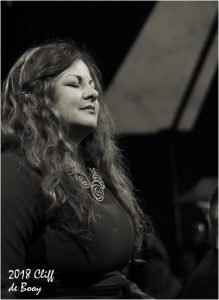 It’s actually amazing how little the band needs to build up a beautiful song. A touch of keyboard, some strings, a tap on the drums and Darina’s warm voice and see, the goose bumps are already there. Build up like that Momphinstvo is not only a beautiful intro into More, Ta Nali, but also into the whole CD. More, Ta Nali is one of the more up-tempo songs on roots. Uplifting percussion, mesmerising flute melodies and again Darina’s wonderful warm voice. I just love, how in Middle-Eastern cultures the voice is more than a carrier of words, it is an instrument in itself. With the surprise percussion break in the middle More, Ta Nali is easily my favourite song on Roots.
The single Rusa is equally beautiful. This ballad really features Darina’s voice. One of the members of Seed, Sara, lovingly put it to words on Darina’s Facebook page: “I think Roots is the perfect way of introducing you to the people who haven’t seen you perform with the band yet. What you can do with your voice is amazing, and hearing Rusa for the first time made me cry a little”. There isn’t anything more I can add to that well-deserved compliment.
It’s actually amazing how little the band needs to build up a beautiful song. A touch of keyboard, some strings, a tap on the drums and Darina’s warm voice and see, the goose bumps are already there. Build up like that Momphinstvo is not only a beautiful intro into More, Ta Nali, but also into the whole CD. More, Ta Nali is one of the more up-tempo songs on roots. Uplifting percussion, mesmerising flute melodies and again Darina’s wonderful warm voice. I just love, how in Middle-Eastern cultures the voice is more than a carrier of words, it is an instrument in itself. With the surprise percussion break in the middle More, Ta Nali is easily my favourite song on Roots.
The single Rusa is equally beautiful. This ballad really features Darina’s voice. One of the members of Seed, Sara, lovingly put it to words on Darina’s Facebook page: “I think Roots is the perfect way of introducing you to the people who haven’t seen you perform with the band yet. What you can do with your voice is amazing, and hearing Rusa for the first time made me cry a little”. There isn’t anything more I can add to that well-deserved compliment.
One of the key elements of the Irfan sound is how subtle the music is, minimalistic almost. On Dyulber Yana for instance the song doesn’t actually start, it slowly evolves from a single note to a beautiful song. Solos are also not clearly ‘started’, they appear in the music, the melody lines just slide into a solo piece and they slide out again just as easily. Yasen places some really nice harmonium melodies in it, quite catchy actually, and it is surprising how this ballad picks up speed in the end.
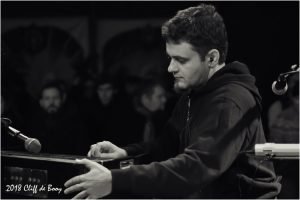 Emeriga is -in the Irfan world- a fast dance song. Driving percussion, doubled vocals, cool string instrument, and the wonderful low ‘hoarse’ flute solo, all together make for a really powerful energetic song. A real crowd-pleaser amongst the dancers during live shows, I’m sure of it, and also one of my favourites on the album.
Emeriga is -in the Irfan world- a fast dance song. Driving percussion, doubled vocals, cool string instrument, and the wonderful low ‘hoarse’ flute solo, all together make for a really powerful energetic song. A real crowd-pleaser amongst the dancers during live shows, I’m sure of it, and also one of my favourites on the album.Lyube Le is already the last song on Roots. Sadly, because I would have loved to hear one or two more songs, Roots is that beautiful. Anyway, Lyube Le is another stunning song. A beautiful intro featuring Ivaylo on lute and -she has been mentioned before- the wonderful Darina. The tender duet between Yasen and Ivaylo also can’t go unnoticed. On this song Irfan leaves the homely feel and drifts of to the ancient world again. Back into the magical music world they so beautifully created.
To sum it all up, Roots is a beautiful addition to your Irfan collection or a stunning gateway into the musical world of this wonderful Bulgarian band. Either way if you love the music of Dead Can Dance, Cesair and Loreena McKennitt, then this is a must-have CD. 10 out of 10 if we were giving points.
– Cliff
Editor: Diane
Pictures: taken at Winter Castlefest by Cliff de Booy Photography
